
Review on 🍳 Sinocare Food Scale for Baking and Cooking, 11lb Digital Kitchen Scale with Nutritional Analysis APP, Tare Function, Grams and Ounces, 1g/0.1oz Increments, Stainless Steel, Waterproof by Iris Swatson

that's a bad scale. it's like the chorus, but the other way around: appearance 8, functionality 2
this vote is just bad. this of course *looks* like no expense was spared to give the impression that no money was being saved. to make it look good. from the pictures it *looks* like it was designed pretty well. indeed, it may have been before engineers were firmly instructed that "cheap to manufacture" was the primary and *only* goal, alongside perhaps "getting as many sales as possible: oh, and adding an app. Apps are on sale! and have him measure milk because milk is a popular diet food for keto stuff!” That's *real* stainless steel. but its thickness is less than half a millimeter; slightly thicker than foil. The display is bold, bright and easy to read. but what is shown is wrong. Buttons look like buttons. but they are simply molded into the plastic and are touch sensitive, with no physical feedback. I understand it's cheaper. Interface delays, scaling delays. everything feels like you're a step behind you. According to my video, it takes more than 20 seconds from turning it on before you're ready to weigh things. Unfortunately, since the readings after launch are *not* zero and stable, but kind of negative and falling, you need to calibrate first. which takes another 5-10 seconds. Since there are only 2 buttons, one for power and the other for units, how to calibrate then? Are we pushing the power for a long time? No! we press *short*! It's like a regular quick press, but shorter. The good news is that it's easy after some practice, and the other good news is that you definitely need practice to use the scale! My copy is a bit random: after weighing something at 100g, I weigh it again and it will weigh 97g. Next time it will read 88g and not read 0 when I remove the weight where the scale reads -13g. After waiting a bit, I can watch it slowly drop to -33g. If I have any luck with a quick press to activate the tare (rather than powering off the unit and forcing me to start over) it resets back to 0 until I weigh something repeating the cycle. Units include ounce, lb/oz, g, fl oz milk, fl oz water, ml milk, ml water. That's fine until you realize there's only one button for it, meaning you have to cycle through each device until you get to the one you want. Devices persist across sleep/wake cycles. I haven't bothered to test the Bluetooth app for such a strange device, but I've verified that the scale *works* and it *should* be easy to reverse engineer the protocol so you can write your own applications . Resolution is 1g or 0.1oz, repeatability and accuracy are too poor to measure. On the best effort, the 100g weight varied from 104g to 74g, often changing to 3-5g when left alone and away from air currents. I can't tell if the scale is broken or just plain bad. It's well designed and *parts* of it are well made for something cheap, but while it *looks* nice, it *feels cheap once you pick it up. I can't tell you if it's really waterproof. The top definitely looks like this. On the back are legs with separate pressure sensors that the scale's microcontroller reads and averages 4 sensors to get and display the weight of the object placed on the scale. The legs are separate but solid pieces of plastic and rubber, allowing them to move independently for each sensor. I haven't taken it apart as I plan to return it, so I can't tell you if the sensors are covered with a waterproof membrane, but they feel like they aren't. the battery compartment is *definitely* not waterproof. Update: After removing the factory batteries for a few hours and swapping them out, the boot time is less than 10 seconds and the measurements are a bit more stable. So I tried new Procell batteries and got identical results. After a few hours of non-use, the scale returned to charge for more than 20 seconds and has a non-zero starting tare with the same problems I described above. All in all, I can't say if it's defective or just bad. It looks fine until you look closely, and I *can* make a kitchen-ready approximation of the measurement out of it if I'm not doing anything critical. I just can't weigh 100 grams of protein and get the same weight as 100 grams of sugar. or weigh a second 100 gram serving and make it about the same weight as the first. These scales are the opposite of what a useful device should be. To fit into the user's life, the device must be useful, easy enough to use, and reliable enough that the device is essentially invisible. This is a bit unfair to the device as it should be taken for granted and never thought about it after purchasing it. If I have to fiddle with it, or worry that it's inaccurate, or wait for it to do its thing, a device in this class has already failed. yes, *optics*, *fit* and *finish* are important, and a beautiful and high-quality thing needs to be protected and cared for. Gosh, if done right, it will encourage the owner to take care of something that should otherwise evoke the same attitude a screwdriver does to a Sharpie (electrician). Unfortunately for designers, it's "functionality" and "practicality" that ultimately decide the fate of such a device. in particular, *my* copy of this appliance is defective and will be returned for a refund and a different brand and model of kitchen scale. Look 9, feel 2, functionality 2.
- scale
- horrendous price
New products
Comments (0)
Top products in 🧂 Kitchen Utensils & Gadgets

Cocktail Shaker, Cocktail Shaker Set, Martini Shaker, Drink Shaker, Bartender Kit 25 Oz Margarita Drink Mixer Christmas Gift, Muddler, Mixing Spoon, Jigger, Liquor Pourers Alcohol Tool Strainer Set

44 Review
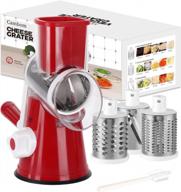
Cambom Rotary Cheese Grater Shredder Chopper Mandoline Slicer Nut Grinder Vegetable Cutter Hash Brown Potato With Suction Base

43 Review
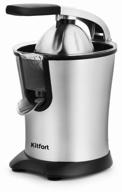
Citrus juicer Kitfort KT-1108, black/silver

126 Review

Geratherm Classic Green Thermometer

44 Review
Another interesting products

PME Scriber Needle Modelling Tool, For Cake Decorating, 5.7-Inch

38 Review
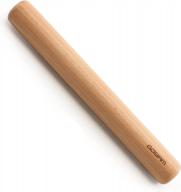
GOBAM Wood Rolling Pin: The Perfect Dough Roller For Baking Cookies, Pie, Pizza & More - 13 X 1.38 Inches

35 Review
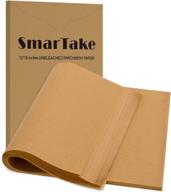
300PCS Pre-Cut Unbleached Parchment Paper Sheets - Perfect For Baking, Grilling, Air Fryer & Steaming!

36 Review
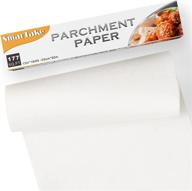
SMARTAKE Non-Stick Parchment Paper Roll, 13 In X 164 Ft (177 Sq. Ft) For Baking, Cooking, Air Fryer, Steamer, Kitchen, Cookies, Bread, And More - White Baking Pan Liner

41 Review

